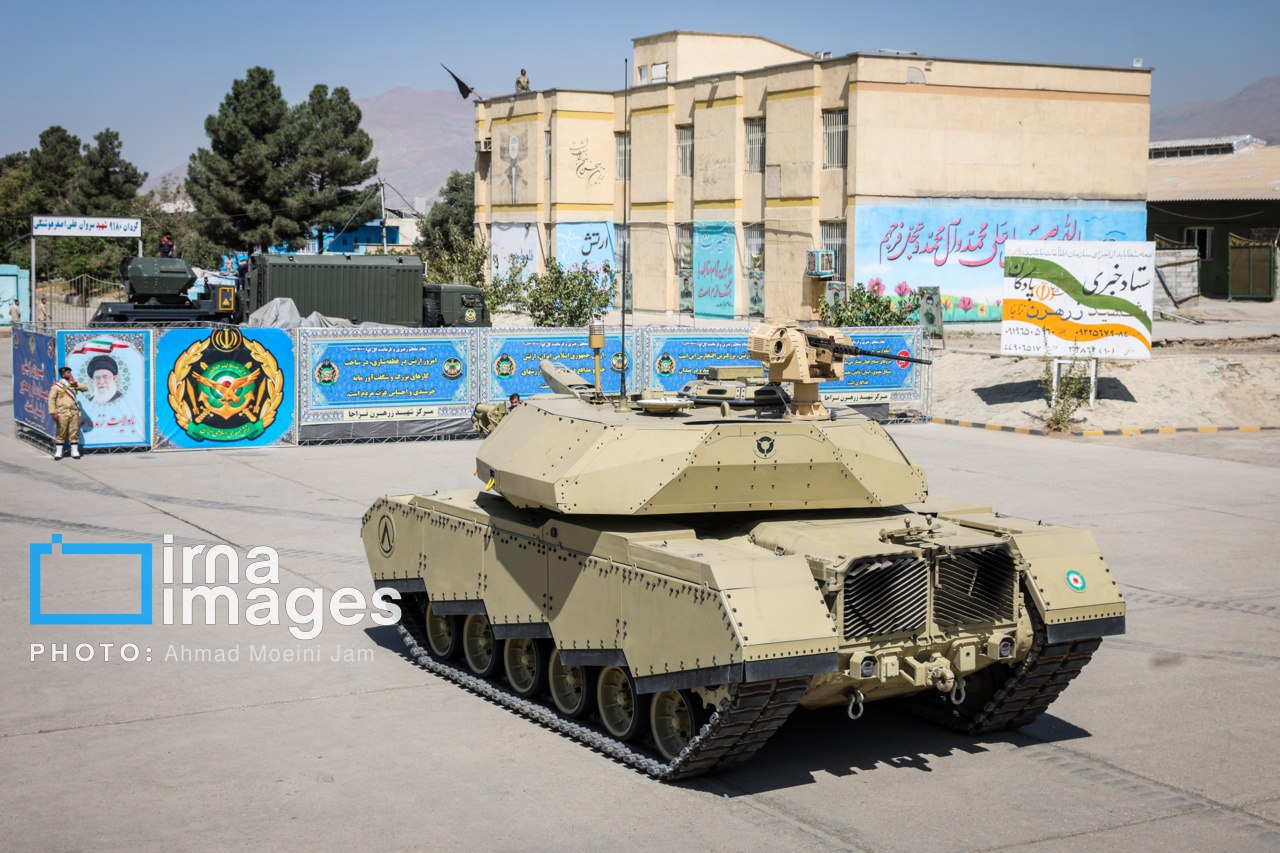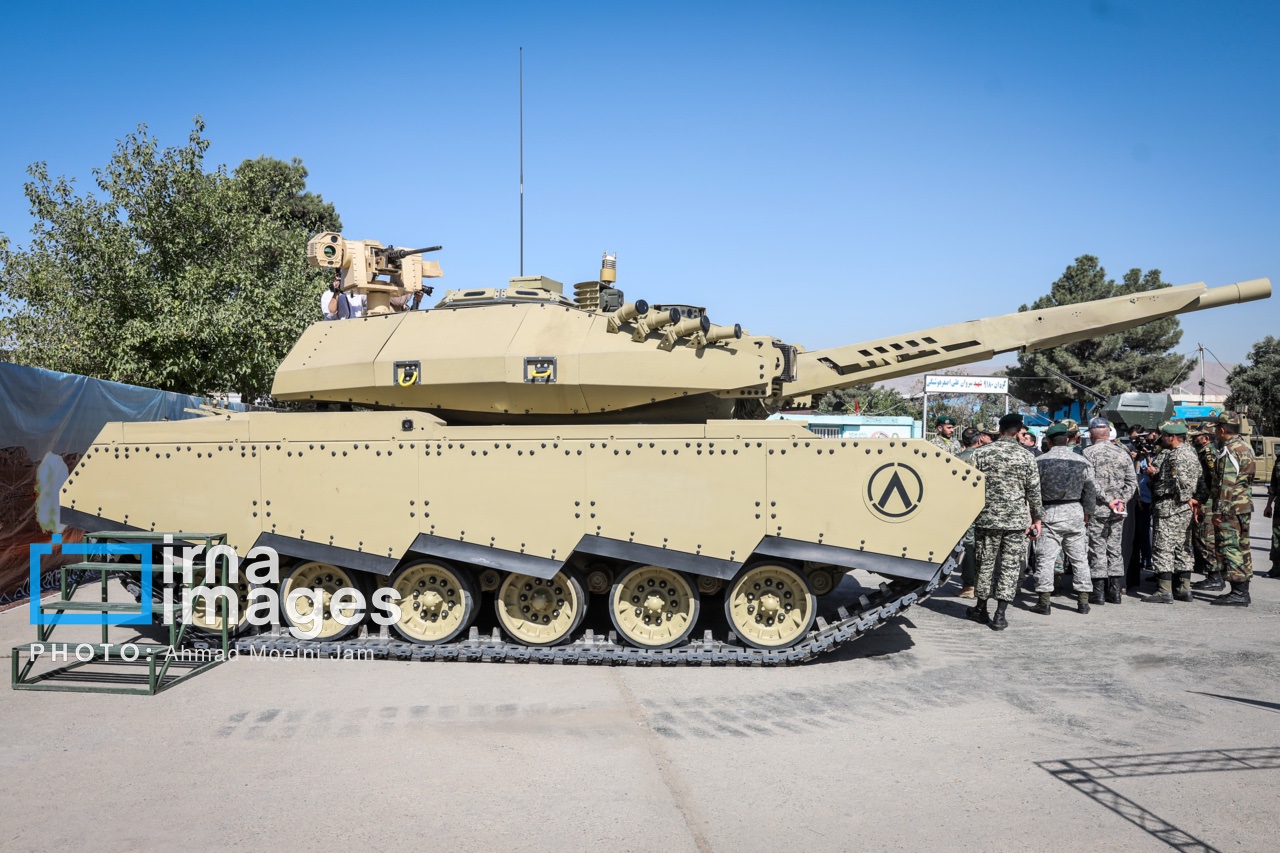Iran has unveiled an upgraded variant of the US-origin M-60 Patton tank called ‘Soleiman-402’ in the wake of a widening rift with the United States and Israel.
Despite decades of bitter hostility, Iran is one of the few remaining users of archaic US military equipment that was acquired by the country before the Iranian revolution. The country has been under U.S. sanctions since 1979 and has struggled to get authentic spare parts to maintain its aging fleet of Cold War-era equipment.
However, that has not stopped the country from extensively upgrading the second-generation M-60 Patton tanks with better maneuverability and more destructive power.
On September 2, Iran unveiled a domestically upgraded variant of the tank at a ceremony held in Tehran in the presence of the Iranian Army chief commander, Major General Abdolrahim Mousavi, and Commander of the Ground Force of the Iranian Army, Brigadier General Kiumars Heidari. The images of the new tank have gone viral on social media.
According to the official news agency IRNA, Iranian experts made the upgrades at a production and repair center for army ground forces in Tehran. The Soleiman-402 tank has reportedly been furnished with a commander’s machine gun on a two-degree-of-freedom mobility platform, a coaxial machine gun, and a weapons fire control system.
Iranian Army announces the addition of the advanced M60 tank to its ground forces, bolstering its military capabilities. The highly capable tank is expected to enhance the country's defense and combat readiness. pic.twitter.com/V4fp2cU0gy
— Facts Prime (@factsprime35) September 1, 2024
The tank has reportedly received a comprehensive overhaul, which includes a new commander’s turret, reactive armor, infrared jamming, smoke grenades, back, front, and side view cameras, fire alarms, and suppression systems.
Additionally, some local media reports noted that this newly unveiled tank has night vision cameras, which will allow it to conduct 24/7 operations. According to Iranian reports, a feature of the tank that stands out is its ability to aim and hit targets while in motion.
While the add-on armor was a buzzing point for netizens, some military observers drew attention to the Soleiman-402’s enhanced situational awareness, which makes this Cold War-era tank relevant and combat-capable. The tank’s upgrades have focused on survivability and operational efficacy in modern combat. All the M-60s in Iran’s inventory are expected to be upgraded to this variant in the future.
Though Iran's 'Soleiman-402' M60 upgrade does improve armour, the most important (visible) improvement is the cameras and sensors providing situational awareness and night-vision capability for the gunner (red box) commander (blue) and driver (green). https://t.co/h9aWvbw1vl pic.twitter.com/HOBeifX7bN
— Aᴍɪʀ (@AmirIGM) September 1, 2024
Iran’s inventory is filled with age-old equipment acquired several decades ago, with international sanctions posing a massive hurdle in purchasing new systems and upgrading the older ones.
Although the West Asian nation has made significant progress in the development of Unmanned Aerial Vehicles (UAVs) and missiles, it has opted to enhance its existing ground-based systems, specifically Main Battle Tanks (MBTs).
In 2018, the former Iranian Deputy Defense Minister Reza Mozaffarinia announced that Tehran planned to manufacture or upgrade 700 to 800 battle tanks.
“Annually, there are 50 to 60 tanks manufactured and a sufficient budget has been allocated because the army and Revolutionary Guards have a great need,” Mozaffarinia said without specifying a timeline for this ambitious project.

Two years later, in 2020, Iran unveiled the upgraded T-72M1 main battle tanks (MBTs). It also developed an indigenous tank called ‘Karrar,’ but its capability did not inspire confidence among military observers.
Karrar was unveiled after discussions to secure the technology and license needed to construct Russian T-90MS tanks failed. Based on the Soviet-origin T-72, the Karrar tank aimed to combine aspects of the American M1 Abrams, British Challenger 2, and T-72.
The introduction of the enhanced American-made M-60 Patton tank holds considerable importance in light of the deteriorating relationship between Iran and the United States, which has reached its lowest point in recent years. The unveiling comes at a time when the US has bolstered its presence in the Middle East, anticipating an Iranian attack on Israel.
Earlier, Iran was a big beneficiary of US military equipment before the Shah of Iran, who owed his allegiance to the United States, was overthrown. As per a 1976 staff report by the Senate Committee on Foreign Relations, Iran was the biggest individual buyer of US military hardware at that time. Between 1972 and 1974, military sales climbed from $524 million to $3.91 billion, a more than seven-fold increase. SIPRI data suggests that the amount increased and peaked in 1977.
According to the staff report, former US President Richard Nixon and Henry Kissinger, his national security adviser at the time, originally agreed to “sell Iran virtually any conventional weapons it wanted” in 1972. Due to its oil money, Iran was able to purchase some of the most advanced US military hardware and obtain technical and training support from US experts.
The US M-60 Patton, for one, has been a battle hero across different combat zones. Inducted into service by the US Army in 1960, the tank quickly became the mainstay of the service during the Cold War.

The US M-60 Patton MBT
During a particularly volatile period of the Cold War, the M-60 Patton tank was deployed to counter the advances made by rival Soviet tanks. Developed from the M-48 Patton tank, the M-60 Patton boasted improved armor, more firepower, and a longer cruising range than its predecessors.
The Army installed an integrated fire control system to expedite reload times during the conflict. The M60 Patton’s armor consisted of a homogenous steel hull around six inches thick and a 105mm rifled cannon barrel.
The M-60 has proven itself in battles around the globe. It was first tested by the Israeli Defense Forces (IDF) under the harsh conditions of the Yom Kippur War. Finally, the Americans used the M-60 during their brief battle against Grenada. Throughout its life, the M-60 has undergone numerous modifications. Based on the architecture of the M-48, the interior offered plenty of room for improvement and expansion.

The United States Marine Corps, one of the more inventive sections of the US military, used the M-60 in combat against Saddam Hussein’s Iraqi Army, even though the Army had given up on it in favor of the M1 Abrams MBT by the beginning of Operation Desert Storm in 1991.
There was only one Marine M-60 lost in action against the Iraqis. In the meantime, 100 Iraqi tanks were destroyed by the Marines using M-60s.
Iran’s principal adversary, the Israel Defense Forces, similarly employed the tank. During the Yom Kippur War of 1973, the M-60 was rigorously evaluated in direct tank engagements against Soviet models.
During this conflict, Israel’s Magach main battle tanks were equipped with explosive-reactive armor. Following the 1982 Lebanon War, Israel’s fleet of M-60s received additional upgrades, including updated fire controls and thermal sleeves. Later, Israel’s indigenously developed Merkava tanks replaced the M-60s.
- Contact the author at sakshi.tiwari9555 (at) gmail.com
- Follow EurAsian Times on Google News




